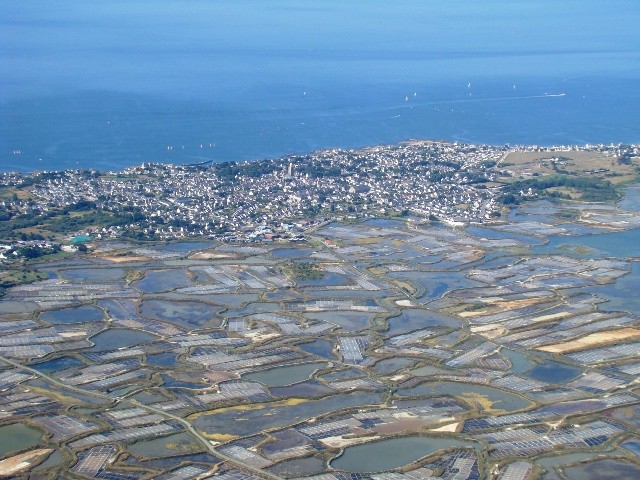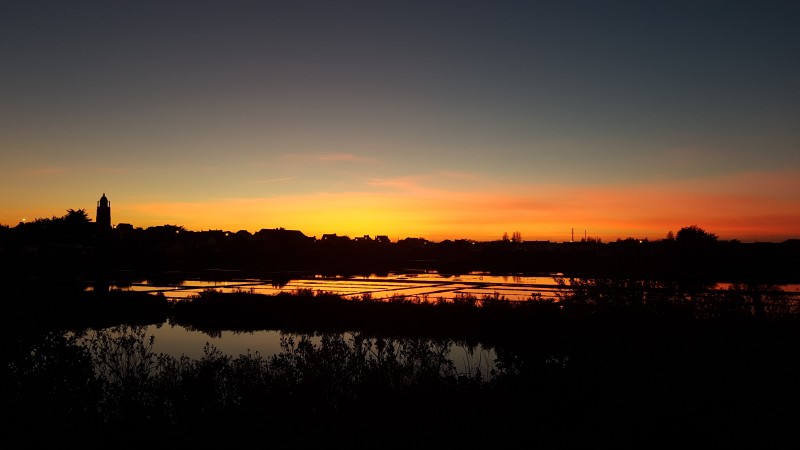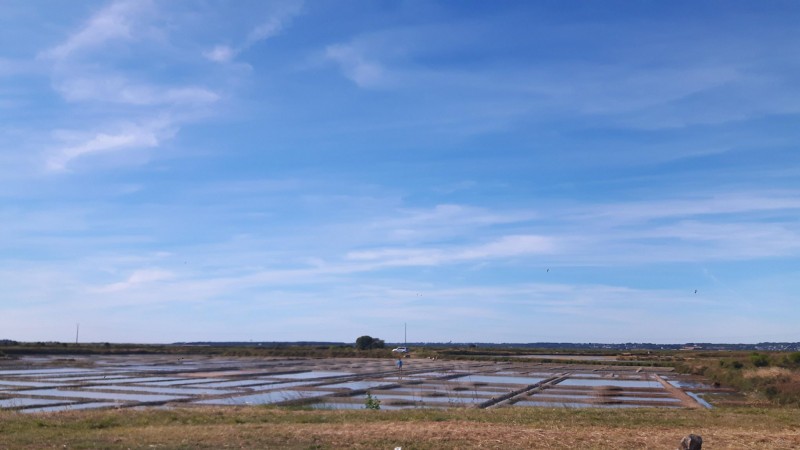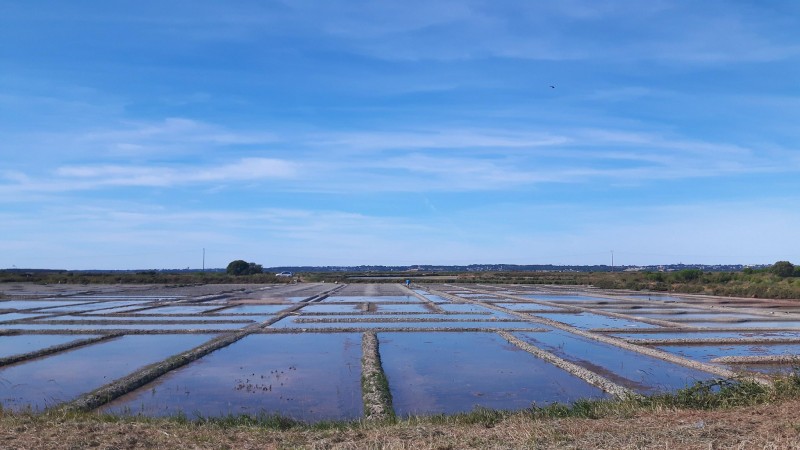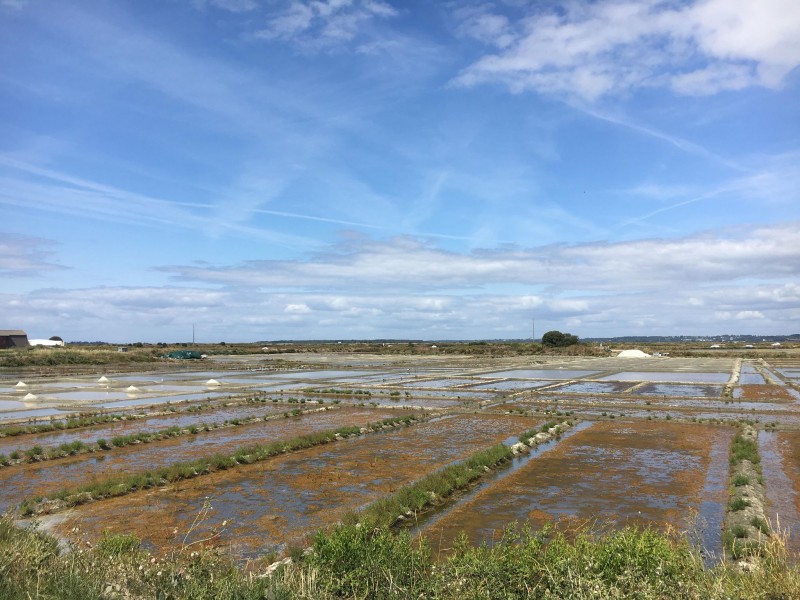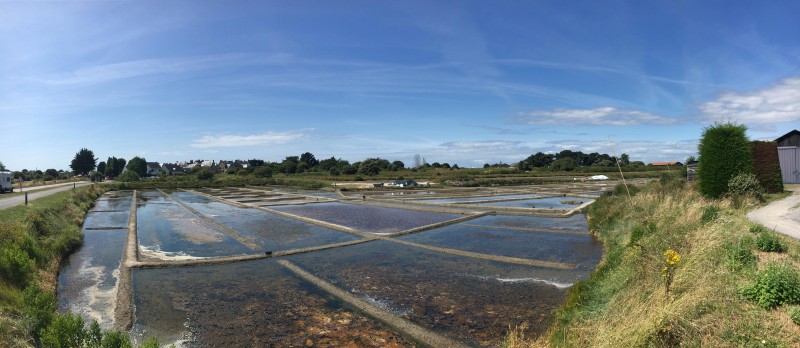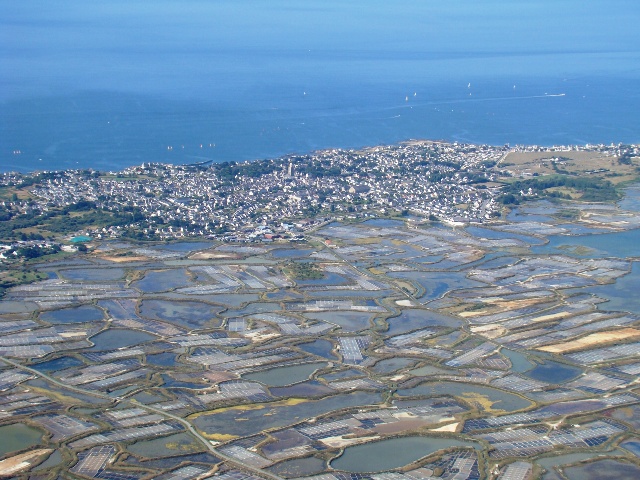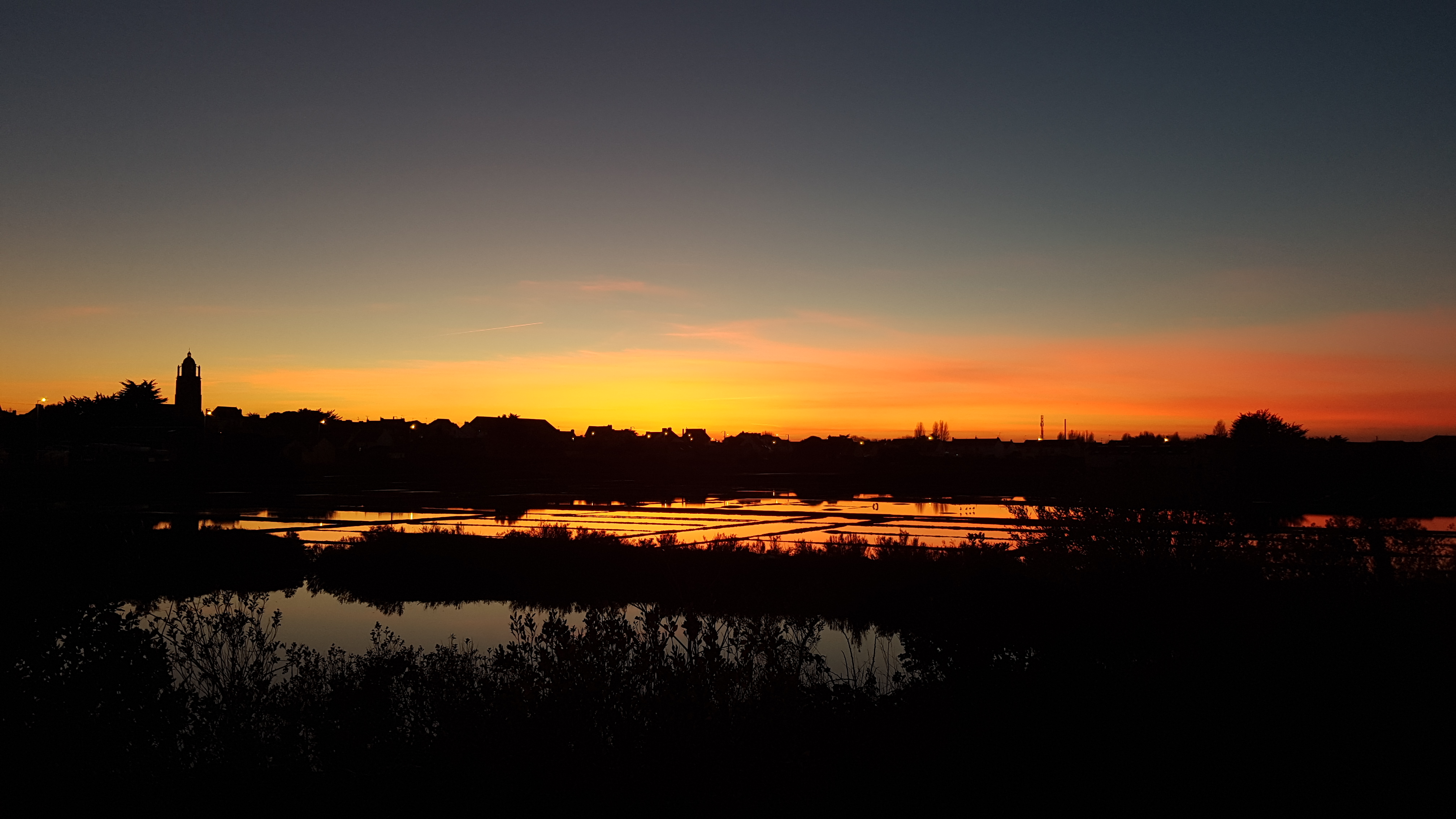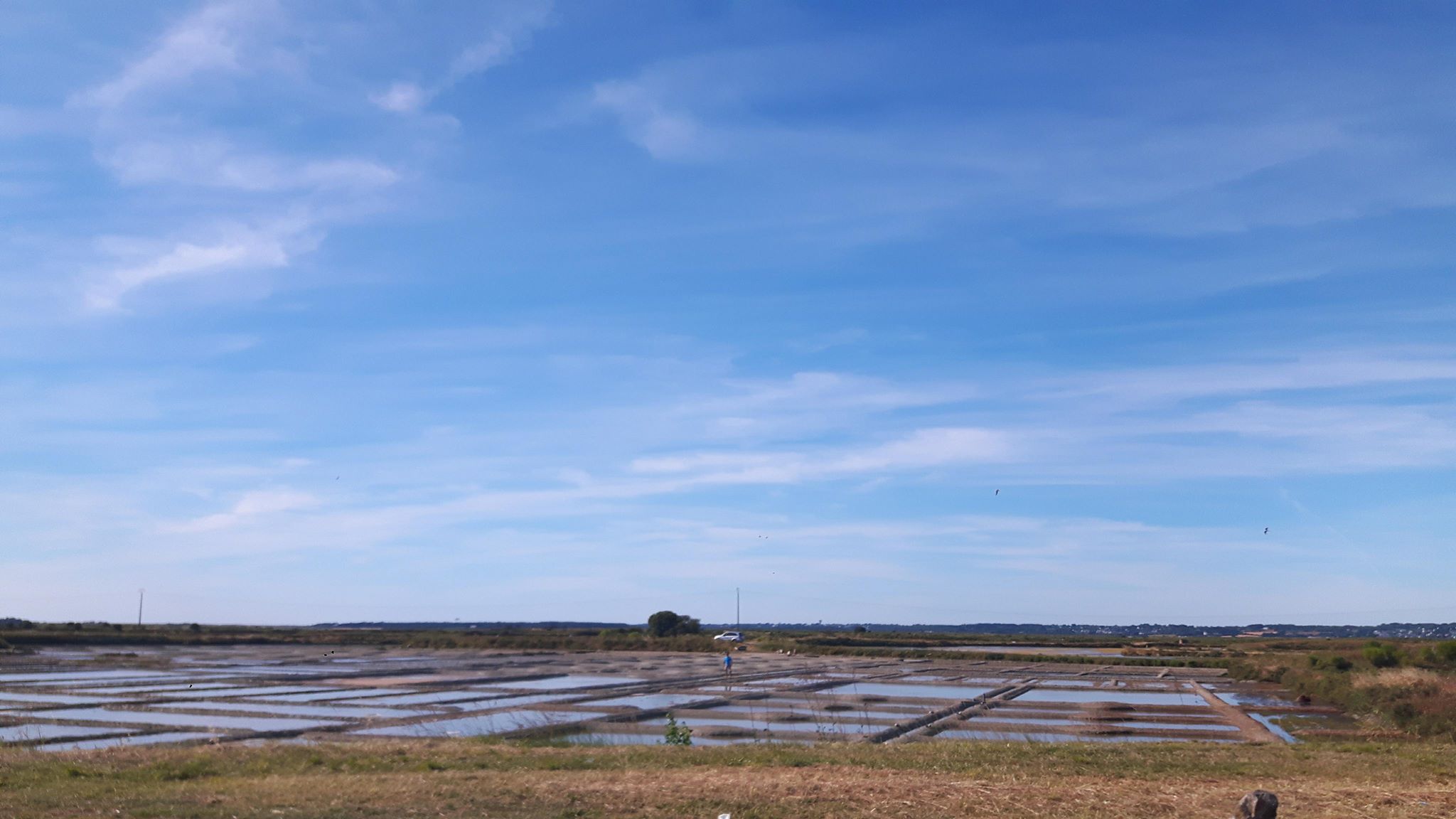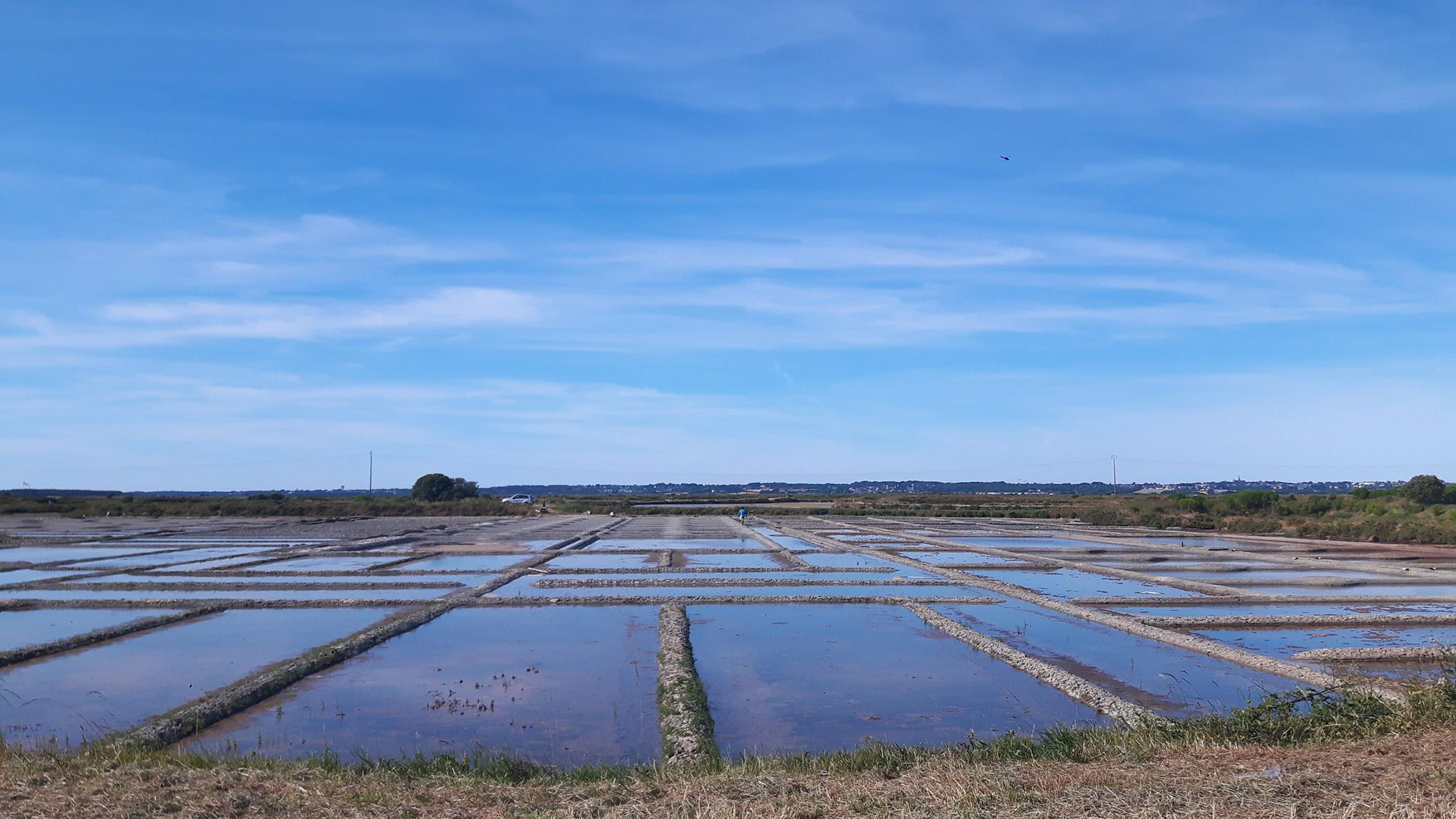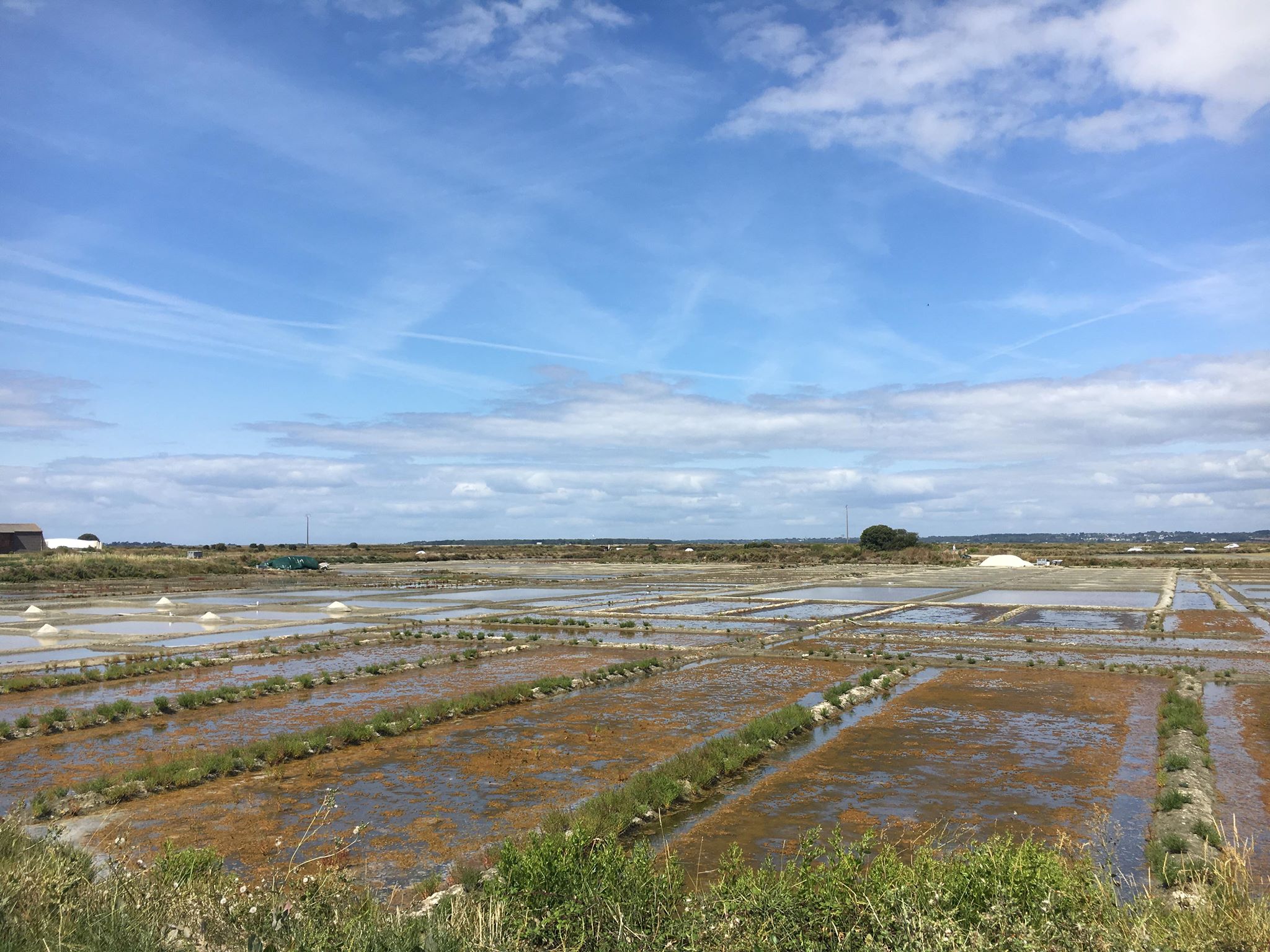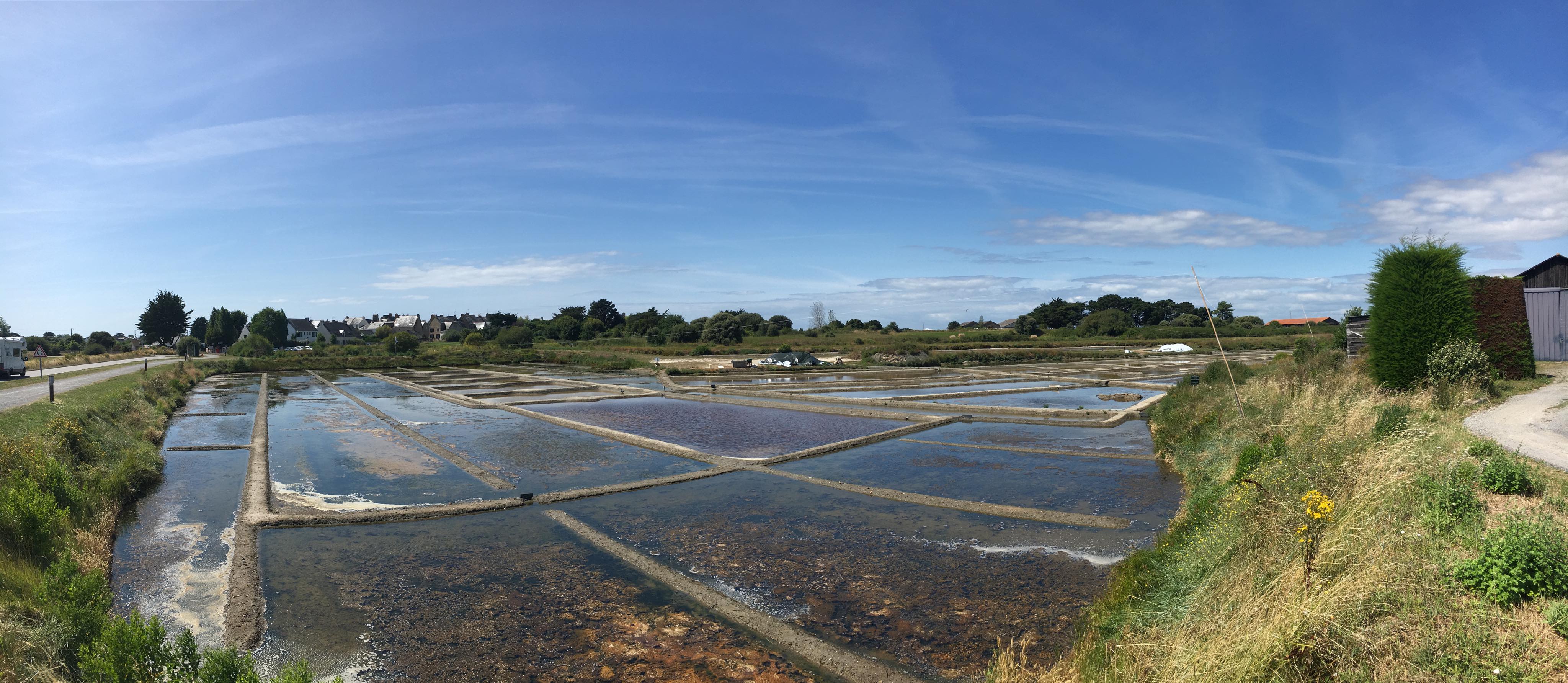The salt marshes
Presentation
The first salt marshes came into being back in the IXth century. Even back in the XVth century they already existed in the format which we know today. In the summer the salt worker ‘le paludier’ harvests this ‘white gold’ using the traditional methods of his ancestors. At the time of the largest tides the water rushes into the marshes and follows a circuit which ultimately ends up in the evaporating pools ‘les œillets’.
The combined action of the wind and the sun facilitates the evaporation of the water so that it reaches a level of salinity which is ideal for the harvesting of the salt. Many of the inhabitants of Batz-sur-Mer ‘les batziens’ practice this job in the 459 hectares of salt marshes surrounding the village.
At the time of the largest tides in summer, the water rushes into the marshes and follows a circuit which ultimately ends up in the evaporating pools ‘les œillets’. The combined action of the wind and the sun facilitates the evaporation of the water so that it reaches a level of salinity which is ideal for the harvesting of the salt.
Discover the salt marshes in Batz-sur-Mer !
The area of the salt marshes is a natural curiosity and and exceptional space of discovering. But first of all, this space is a working and production space, a wetland with a fragile ecological balance. Too many visitors and disrespectful attitudes can create an unsafe futur for this heritage.
Salt marshes are privates propreties but somes salt workers will welcome you to make you discover their work and the environment of the salt marshes.
You can alos get a chance to discover the salt marshes and the villages with a carriage ride.
How does the salt marshes work ?
- winter and spring are the time of the year dedicated for maintenance works and the marshes preparation for the summer harvest.
- in summer time, in high tides, le salt worker fill the tank (called ‘vasière’) by opening the trap which communicate to an other tank called ‘l’étier’. Then, the water can circulates through several basins : ‘cobier, fards, adernes) where water can flow thanks to gravity obtained by meticulous adjustments.
Water evaporates from the sun and wind’s action. The salinity grow up in the ‘œillets’ where salt crystallizes.
The ‘paludier’ produces 2 kinds of salt :
- ‘le gros sel’ the big salt which is grey and obtained from the clay
- ‘la fleur de sel’ the salt flower, thin and white picked from the surface of the eyelet.
The combined action of the wind and the sun facilitates the evaporation of the water so that it reaches a level of salinity which is ideal for the harvesting of the salt. Many of the inhabitants of Batz-sur-Mer ‘les batziens’ practice this job in the 459 hectares of salt marshes surrounding the village.
At the time of the largest tides in summer, the water rushes into the marshes and follows a circuit which ultimately ends up in the evaporating pools ‘les œillets’. The combined action of the wind and the sun facilitates the evaporation of the water so that it reaches a level of salinity which is ideal for the harvesting of the salt.
Discover the salt marshes in Batz-sur-Mer !
The area of the salt marshes is a natural curiosity and and exceptional space of discovering. But first of all, this space is a working and production space, a wetland with a fragile ecological balance. Too many visitors and disrespectful attitudes can create an unsafe futur for this heritage.
Salt marshes are privates propreties but somes salt workers will welcome you to make you discover their work and the environment of the salt marshes.
You can alos get a chance to discover the salt marshes and the villages with a carriage ride.
How does the salt marshes work ?
- winter and spring are the time of the year dedicated for maintenance works and the marshes preparation for the summer harvest.
- in summer time, in high tides, le salt worker fill the tank (called ‘vasière’) by opening the trap which communicate to an other tank called ‘l’étier’. Then, the water can circulates through several basins : ‘cobier, fards, adernes) where water can flow thanks to gravity obtained by meticulous adjustments.
Water evaporates from the sun and wind’s action. The salinity grow up in the ‘œillets’ where salt crystallizes.
The ‘paludier’ produces 2 kinds of salt :
- ‘le gros sel’ the big salt which is grey and obtained from the clay
- ‘la fleur de sel’ the salt flower, thin and white picked from the surface of the eyelet.
Clasification, Labels, Chains
- Labels and Brands :
Information
- Visit/Heritage :
- Marsh/wetland
- Kind of visits :
- Guided visit
- Visit at your leisure
Contact
The salt marshes
route des Marais
44740
BATZ SUR MER

